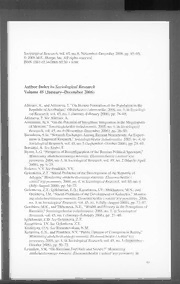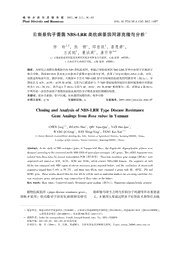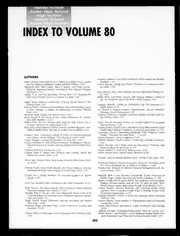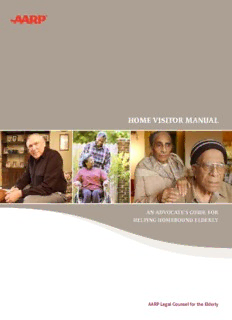
An Advocate's Guide for Helping Homebound Elderly PDF
Preview An Advocate's Guide for Helping Homebound Elderly
Home Visitor manual An AdvocAte’s Guide for HelpinG Homebound elderly AARP Legal Counsel for the Elderly Acknowledgements This manual, and our home visit project, would not be possible without the efforts of many extraor- dinary organizations and people. First of all, this entire project would not be possible without the financial support of the D.C. Bar Foundation through the public money for legal services and the efforts of D.C. Access to Justice Commission in successfully advocating for District of Columbia gov- ernmental support for legal services in D.C. neighborhoods. In addition, AARP and Legal Counsel for the Elderly (LCE) have provided and continue to provide a great deal of support to this project not the least of which has been the publication of this manual. I am grateful to all the individuals who have provided assistance, including the entire staff of LCE for making this manual a success. In particular, I want to thank Ms. Barbara Johnson, a tireless crusader for older adults, who helped guide the development of this manual and shepherded it through the creative process. Barbara’s caring manner and sympathetic ear have endeared her to our clients, and her licensure as a notary has been vital to the ongoing success of Project HELP. Rawle Andrews, Jr., was the managing attorney of LCE when this manual was conceived and drafted. His guidance and support was essential to its creation. Even more importantly, without Rawle’s cre- ative vision, Project HELP might never have become a reality. Jan Allen May, the director of LCE, has been a guiding force and inspiration for our staff. He conceived of the notion of a full-time attorney devoted to home visits to give priority to this vulnerable group within our client community and wrote the initial grant proposal funding this project. He has dedi- cated much of his life to serving the low-income, elderly residents of the District, and I am especially grateful to him for giving me the opportunity to work at LCE and serve our clients. Sally Balch Hurme, senior project manager at AARP; Ellen Klem, staff attorney at the Commission on Law and Aging of the American Bar Association; and Barbara Betsock, Project HELP volunteer, all re- viewed and edited this manual. Their ideas helped shape the final product, and I am grateful for their time and assistance. On a personal note, I thank my parents, Bill and Maureen NesSmith, for teaching me the importance of social justice and encouraging me to follow this career path. Finally, I could not do this work without the love and support of my wonderful husband, John. —Vanessa Anne Buchko i ii Home Visitor Manual A. What is Project HELP? .............................................................................................................................................1 1. Identifying and Responding to Client Needs in the District of Columbia .....................................................1 2. Purposes of Project HELP .............................................................................................................................................1 a. Legal Services ...........................................................................................................................................................1 b. Holistic Approach ...................................................................................................................................................2 B. Creating a Home Visit Project ................................................................................................................................2 1. Outreach to Increase Community Awareness and Funding ...............................................................................2 2. Identifying and Recruiting Clients ............................................................................................................................3 a. Outreach to Community Members and Potential Clients ...........................................................................3 b. Estate Planning Clinics ..........................................................................................................................................4 c. LCE Intake Process ..................................................................................................................................................5 3. Determining Whether a Client is Homebound ......................................................................................................5 C. Logistical Considerations for Home Visits .........................................................................................................7 1. Safety of Staff and Volunteers ....................................................................................................................................7 2. Hygiene ............................................................................................................................................................................7 a. Handwashing ............................................................................................................................................................7 b. Bed Bugs ....................................................................................................................................................................7 i. Measures to Protect Against Bed Bugs .......................................................................................................8 ii. Protecting Clients From Embarrassment .................................................................................................8 3. Creating a Mobile Office ...............................................................................................................................................9 4. Scheduling Home Visits ................................................................................................................................................9 5. Streamlined Process for Wills and Powers of Attorney .....................................................................................10 D. Ethical and Legal Issues Implicated in a Home Visit Program ................................................................11 1. Attorney-Client Privilege .............................................................................................................................................11 2. Client Mental Capacity ................................................................................................................................................11 3. Retainer Agreement .....................................................................................................................................................13 4. Execution Ceremonies .................................................................................................................................................13 E. Volunteers and Pro Bono Assistance ...................................................................................................................14 1. Volunteers .......................................................................................................................................................................15 2. Witnesses .........................................................................................................................................................................15 3. Notaries ..........................................................................................................................................................................15 4. Pro Bono Attorneys .......................................................................................................................................................16 F. Conclusion ...................................................................................................................................................................17 Addendum .......................................................................................................................................................................18 iii A. What is Project HELP? Project HELP is an acronym for the D.C. Homebound Elderly Project, an initiative launched by Legal Counsel for the Elderly (LCE) in 2007 in response to a growing need for legal services for homebound elderly clients. Project HELP attorneys provide free civil legal services to low-income older adults in the District of Columbia who are unable to leave their homes or who reside in assisted living facilities, nursing homes, or hospitals.1 1. Identifying and Responding to Client Needs in the District of Columbia Of approximately 70,600 residents in the District of Columbia age 65 or older, more than 16,000 suf- fer from acute physical or mental disabilities that make it virtually impossible for them to leave their homes even for medical care or groceries.2 These homebound individuals are at risk of becoming iso- lated, losing their quality of life, or becoming victims of scams or abuse. Since its inception, Project HELP has opened more than 450 home visit cases for almost 270 clients. (The number of cases is greater than the number of clients because individual clients often request legal help on several different matters.) Because Project HELP clients’ disabilities prevent them from leaving their homes, they cannot take advantage of traditional legal services offered in a legal aid office. In fact, more than 80 percent of Proj- ect HELP clients had no contact with LCE before the initiative began.3 The dire need of Project HELP clients for legal services is evident from their situations: many live without running water, amidst heightened levels of infestation, and surrounded by large volumes of clutter. Without attorney home visits, it is likely that no one would identify or address these pressing needs, ultimately resulting in a significantly deteriorated quality of life, institutionalization, or worse. 2. Purposes of Project HELP Project HELP’s mission is to preserve the dignity and independence of low-income homebound older adults by (a) providing requested legal services without charge and (b) obtaining adequate income, health care, housing and support services. a. Legal Services Project HELP provides civil legal services in the following areas: estate planning, landlord-tenant, guard- ianship, public benefits, and predatory lending. Project HELP staff and volunteers prosecute and defend cases for home visit clients in probate court, landlord-tenant court, local civil court, and federal court. 1 Project HELP has been funded through the Access to Justice Funding Initiative. Funds are appropriated by the D.C. Council and distributed by the D.C. Office of Attorney General and the D.C. Bar Foundation. At present, the Project HELP grant covers the salary of one full-time staff attorney and contributes to the salary of a managing attorney and administrative support. AARP provides in-kind support. 2 Population for States by Five Year Age Group: July 1, 2008, U.S. Administration on Aging, www.aoa.gov/AoARoot/ 1 Aging_Statistics/Census_Population/Population/2008/docs/Table_1_Population_for_States_Five_Year_Age_Group_2008. xls; Age by Types of Disability for the Civilian Noninstitutionalized Population 65 Years and Over With Disabilities for Each State—Percentages, U.S. Administration on Aging (2000), www.aoa.gov/AoARoot/Aging_Statistics/Census_ Population /census2000/SF3/Disabilities-x-State-65plus.aspx. 3 No information is available as to whether these clients had contact with other local legal services programs. Pro bono attorneys supplement the Project HELP effort. During one recent 12-month period, for ex- ample, attorneys from several law firms in D.C. including Arnold & Porter LLP, Kirkland & Ellis LLP, McDermott Will & Emery LLP, Nixon Peabody LLP, Sutherland Asbill & Brennan LLP, and WilmerHale LLP joined in the effort by accepting a total of 47 cases involving homebound clients. Lesson Learned: Although most home visits require little more than a quick legal analysis, some of the cases arising out of Project HELP require sophisticated legal work. For these reasons, it is advisable to employ a seasoned attorney as a home visitor, if possible, rather than a volunteer or a paralegal. b. Holistic Approach Although Project HELP clients generally contact LCE for help with one particular legal problem, these clients often benefit from help with various other legal issues or social services, such as Meals- on-Wheels or a home health aide. Project HELP staff and volunteers adopt a holistic approach to the client’s welfare and try to identify needs other than the immediate problem for which the client con- tacted Project HELP.4 For example, during a home visit for estate planning, the Project HELP staff may inquire about landlord-tenant issues and public benefits. If a social worker is needed and the client consents, the client may be referred to one of several local social service organizations. As additional legal problems are identified, new cases are opened for clients. Example: During a home visit, a client reveals that he has trouble getting groceries because of his physical disabilities. With the client’s consent, the home visit attorney contacts the nearest social service agency to request that a social worker be assigned to him so that he can begin receiving the Meals-on-Wheels service. B. Creating a Home Visit Project 1. Outreach to Increase Community Awareness and Funding Community events have been tremendously useful for spreading information about Project HELP services and increasing funding opportunities for the project. Such events are usually geared toward social workers, attorneys, or similar professionals. The settings can range from informal meetings with social workers to large-scale promotional gatherings at AARP headquarters to continuing legal educa- tion courses. Because these events vary widely, it is essential to target a specific audience and plan the time, location, and subject matter with this audience in mind. Providing ample written material so that attendees can take stacks of material to their colleagues and clients is useful. At events involving social workers, attendees are encouraged to refer qualified clients to Project HELP. For example, Project HELP staff has attended staff meetings at local social service agencies to provide social workers with background on Project HELP and the income and residency guidelines for new clients. In contrast, events geared toward attorneys focus on the pro bono cases available through the 2 4 For information about holistic legal services, see Jan May and William Anderson, Holistic Legal Services: A How To Manual (2003); Jennifer L. Berger, “Cross-disciplinary Approaches to Eviction Prevention: Alternatives to Landlord/Ten- ant Court for the Elderly Project,” Mie Journal, Spring 2007, at 34; Lydia Williams and Jan Allen May, “Designing and Implementing Outreach and Services for Homebound Elders,” Mie Journal, Fall 2008, at 17. The latter two articles are included in the Addendum. project, and meetings with other types of professionals include requests for financial support. Project HELP staff members have lectured at local legal conferences and D.C. Bar courses on estate planning. In addition, Project HELP attorneys have addressed groups of potential donors at federal agencies in connection with the Combined Federal Campaign and have discussed estate planning options with groups of working-age adults who may seek legal help on behalf of their aging parents. The mention of Project HELP during these presentations has increased its name recognition, pro bono referrals, and potential for financial support. Although staff tailors each presentation to the needs of the specific audience, the presentations usually begin with a brief overview of the home visit program and a public offer of thanks to the organizations that fund the program. While protecting client’s confidentiality, staff members provide examples of cli- ents whose lives were changed positively through the home visit program. Written material about the home visit program, including Project HELP flyers, is available for any interested audience members. As an example, early in the second year of Project HELP’s existence, LCE hosted a breakfast pre- sentation in the cafeteria of the AARP building in Washington, D.C. to inform community service providers of LCE’s innovative programs. Organizers invited heads of social work agencies, deans of local law schools, and local public interest lawyers. Guests received bags containing LCE and Project HELP brochures, flyers, pens, and refrigerator magnets. LCE’s director, managing attorney, and Proj- ect HELP staff attorney explained the services that Project HELP provides. A daughter of a Project HELP client graciously agreed to address the group. She described her mother’s health, her previous- ly unsuccessful attempts to seek legal services for her homebound mother, and the positive changes to her mother’s quality of life resulting from the efforts of Project HELP. The daughter’s public “thank you” to Project HELP was the highlight of the gathering. (For a sample invitation, program, and PowerPoint presentation, see Addendum.) 2. Identifying and Recruiting Clients Because homebound individuals are often isolated by their illness or disabilities, active client recruit- ment is a vital part of building a home visit project. One might assume that clients would naturally transition from receiving walk-in legal services to requesting home visits as their health deteriorated; however, LCE data does not support this assumption. Although LCE has been providing walk-in legal services for decades, a very small percentage of Project HELP clients had previously sought LCE ser- vices on a walk-in basis. The majority of Project HELP clients have never received services from LCE. In fact, anecdotal information indicates that many of them have never met with a lawyer. To reach these new, homebound clients, Project HELP staff members organize outreach events for the local community and potential clients and sponsor estate planning clinics. The LCE hotline also refers clients to Project HELP. Each of these client recruitment methods is discussed in more detail below. a. Outreach to Community Members and Potential Clients Outreach events geared toward community members or potential clients are an efficient way to pro- 3 vide useful legal information and recruit potential clients. At these events, Project HELP staff members provide basic legal information about estate planning in the District of Columbia and encourage the audience to contact LCE for help. Attendees are asked to take Project HELP flyers for homebound relatives and friends. In the past, these events have included meetings of local AARP chapters, the Senior Citizen Police Academy, and support groups for foster grandparents. In addition, managers of low-income senior apartment buildings have invited Project HELP staff to discuss estate planning with groups of residents. The project has also recruited clients by addressing religious congregations in low-income areas. Oftentimes, these presentations arose out of the personal connections of LCE staff and board members, who sought permission from the leaders of their respective houses of worship to make a short presentation. As the community has become more aware of LCE and Project HELP, other religious communities have requested similar presentations. For these outreach events, Project HELP staff has developed a stock presentation that introduces the audience to the home visit program but also discusses basic estate planning documents. This presen- tation, delivered via PowerPoint, briefly outlines the purposes of a healthcare power of attorney, a financial power of attorney, and a will. Project HELP staff members generally conclude the presenta- tion with a few stories about the problems that have arisen because people did not have a power of attorney (i.e., the trauma of a guardianship action) or a will (i.e., lengthy probate proceedings, fights among children). (For a sample flyer and PowerPoint presentation, see Addendum.) b. Estate Planning Clinics Some older adults can leave their homes for short periods but can only travel a few blocks away. They are unable to travel downtown to meet with a lawyer, for instance, but they can go to the common room of their apartment building or to a neighborhood library. To reach these clients, Project HELP sponsors estate planning clinics a few times a year to assist older adults with creating wills and pow- ers of attorney. These clinics require substantial planning and coordination as well as a sizeable cadre of volunteers. Generally, these clinics are held at a common room in a senior apartment building or in a public space such as a library. Each clinic typically is coordinated with a co-sponsoring organiza- tion, such as the management company for the apartment building, an AARP chapter, or another social service agency for older adults. The clinics involve two separate gatherings of the Project HELP staff and the potential clients. At the first event, which takes place about two weeks before the second event, the Project HELP staff provides general information about LCE and Project HELP and discusses basic estate planning documents. At the conclusion of the presentation, Project HELP staff gives each participant an LCE client intake form and questionnaires for wills and powers of attorney. Participants are given the opportunity to complete these forms immediately. Project HELP staff and volunteers make arrangements to retrieve the paper- work later from those participants who need additional time to complete the forms. Before the second event, Project HELP staff contacts each participant to determine whether he or she is eligible for LCE services and conducts a conflicts check. The staff drafts estate planning documents 4 based on the information the participants provide. Those participants who are eligible for LCE services are given a specific appointment time to arrive on the date of the second event. At the second event, Project HELP staff and volunteers meet with each participant individually. The participant signs the retainer agreement and reviews draft estate planning documents. If changes are necessary, staff and volunteers can type changes into a laptop computer and print revised documents with a portable printer. Once the client is satisfied with the documents, the client executes each one be- fore witnesses and a notary, when needed. (For sample estate planning questionnaires, see Addendum.) Lesson Learned: For large clinics, it is advisable to have more than one computer and printer available. c. LCE Intake Process At LCE, all cases involving homebound clients are referred to Project HELP after a comprehensive intake process. First, prospective clients call the main LCE telephone number, which is provided at all outreach events and in written material produced by LCE and Project HELP. Second, intake specialists obtain contact information from the caller, make notations in the internal LCE electronic case manage- ment system about the basic facts of the case, and determine whether the caller meets LCE’s eligibility guidelines for age, income, and residency.5 If a client is not eligible, he or she may be referred to other local legal services groups. Third, the intake staff refers the call to the LCE telephone hotline, which is staffed by experienced attorneys five days a week. Fourth, the hotline attorneys conduct any con- flicts checks to ensure compliance with ethics rules governing attorneys. If a conflict exists, and if the conflict cannot be waived or the caller chooses not to waive it, the hotline staff may refer the caller to other legal services groups in the local area. Fifth, if there are no conflicts, or if the conflicts have been waived, then the hotline attorneys attempt to answer the question immediately. If they are able to do so, then no further steps need to be taken. If the legal matter is more complicated and requires a meet- ing with an attorney, the hotline staff schedules an appointment with a staff attorney. At this point in the process, the hotline staff evaluates the caller for referral to Project HELP by asking each caller specific questions to determine whether he or she is homebound. (For more infor- mation, see section B.3., “Determining Whether a Client is Homebound.”) If the caller is homebound, Project HELP is informed of the new case via both the internal LCE electronic case management system and email. If a case involving a homebound client is an emergency, then the intake staff will immediately notify Project HELP staff via email. Certain situations, such as a dying individual who needs a will or a tenant at risk of imminent eviction, require urgent attention. The staff attorney will schedule a home visit for these clients as soon as possible, preferably within a few days of the client’s request for services. 3. Determining Whether a Client is Homebound One of the most important issues to address when creating a home visit project is which clients will 5 5 To be eligible for LCE services, a client must be at least 60 years of age (55 years for those with a Social Security Disability case), have an annual income less than 200% of the federal poverty guidelines, and reside in the District of Columbia. be considered “homebound.” Each home visit project must tailor this definition to suit its client base. The Administration on Aging considers individuals to be homebound if they have a disabling mental, physical, or emotional condition, lasting six months or more, which causes the person to have difficulty leaving the home alone to shop or visit a doctor.6 Similarly, at LCE, clients are considered “homebound” if they either have difficulty traveling away from home on a daily basis or cannot leave their homes except in an emergency. As Project HELP staff has learned, it is imperative to limit home visits to only those clients who are truly “homebound.” Of course, many clients would prefer to have a home visit than to travel to a law office; however, home visits must be rationed carefully because they require much more of an attorney’s time than does an office appointment. The limited resources of a legal services organization—including its attorneys’ time—must be spent judiciously. LCE hotline staff and Project HELP staff are cognizant of these issues when speaking with prospective clients. For example, instead of mentioning that LCE has a home visit service and then asking whether a client is homebound, the hotline attorneys may pose one or more of the following questions to help ensure that Project HELP resources are used most efficiently: • What days of the week are you available to come into our office? • How do you get to the grocery store/medical appointments? • Are family members or friends available to drive you to appointments? • When was the last time you left your residence/ nursing facility? • Have you attended any court dates for this case? • Do you have a medical condition that makes it difficult for you to walk or to travel places using a wheelchair? • Are you able to get out of bed? Prospective clients who are familiar with the home visit program may describe themselves as home- bound and may even overstate their physical symptoms when speaking with hotline and Project HELP staff. The Project HELP staff has developed a few methods to address these issues. First, if there are questions about a client’s homebound status, the Project HELP staff advises prospective clients that they could be helped more quickly if they came into the law office for an appointment. Second, the hotline staff or the Project HELP staff questions the client about his or her need for this service. Staff members explain that the project has limited resources and services must be reserved for those who truly cannot leave their homes. Third, if questions about a client’s homebound status are raised after the retainer has been signed and the client has been accepted into Project HELP, the staff attorneys can point to the language of the retainer agreement. The agreement explains that Project HELP clients will no longer be eligible for home visits if LCE staff determines that the client is able to travel to the LCE law office. (For sample retainer agreements and related materials, see Addendum. For more informa- tion about the retainer agreement, see section D.3., “Retainer Agreement.”) 6 6 Age by Types of Disability for the Civilian Noninstitutionalized Population 65 Years and Over With Disabilities for Each State—Percentages, U.S. Administration on Aging (2000), www.aoa.gov/AoARoot/Aging_Statistics/Census_Population / census2000/SF3/Disabilities-x-State-65plus.aspx.
Description:The list of books you might like

The Subtle Art of Not Giving a F*ck

The Spanish Love Deception

The Mountain Is You

The Silent Patient
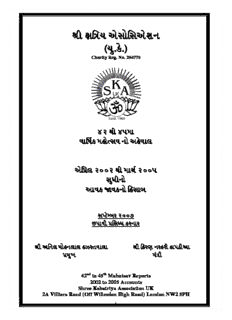
42-45 Mahotsav Reports

Suddenly Psychic: a Skeptic''s Journey

Greek Government Gazette: Part 2, 2006 no. 1889
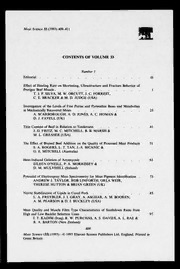
Meat Science 1993: Vol 33 Table of Contents

Review of the flying fish family exocoetidae in the Indian waters
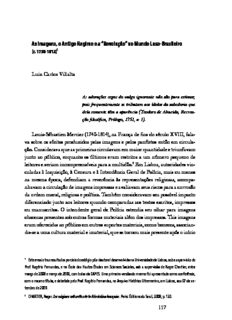
As imagens, o Antigo Regime e a “Revolução” no Mundo Luso-Brasileiro

Warum Manner nicht zuhoren und Frauen schlecht einparken
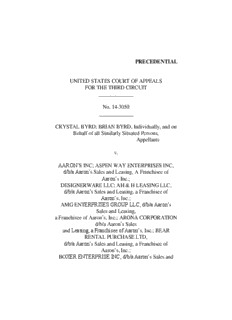
Byrd v. Aaron's, Inc.
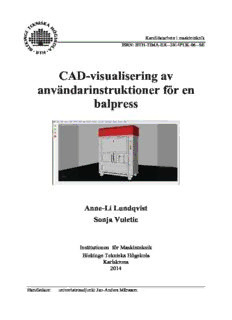
CAD-visualisering av användarinstruktioner för en balpress

Kalyana Kalpataru Gita-tattva No Ii
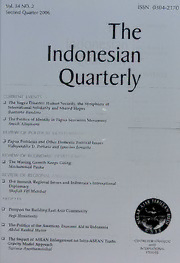
The Indonesian Quarterly Vol. XXXIV No. 2 Second Quarter 2006
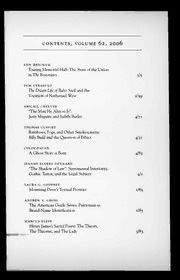
Arizona Quarterly 2006: Vol 62 Table of Contents

Allgemeine und Anorganische Chemie
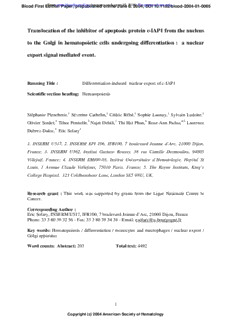
c-IAP1 shuttling from the nucleus to the Golgi apparatus in - Blood

ERIC ED361046: Reinventing Teaching and Testing: Quality Learning for Quality Employment.

